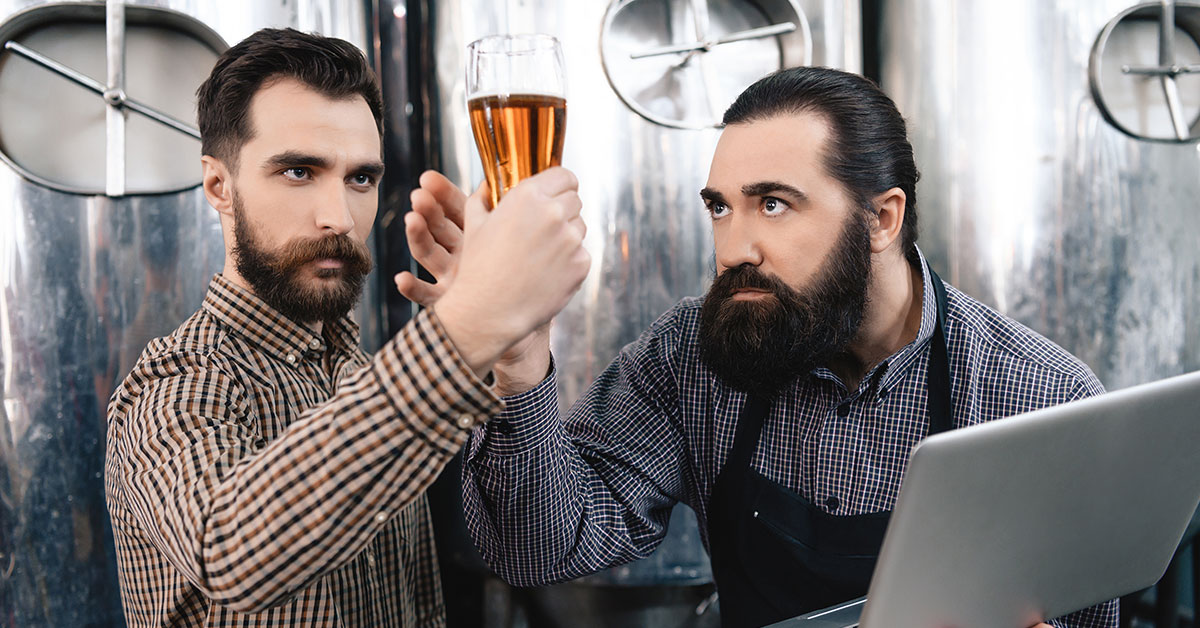Part 1 of the Experimental Lagers Series
Lagers are classified by the type yeast used to brew them, these yeast strains are bottom fermenters and ferment at lower temperatures, then conditioned at cold temperatures, which are too cold top-fermenting ale strains.
Because lagers are fermented cool and conditioned cold, the yeast chemistry and metabolic pathways are slowed down, resulting in the fruity esters produced by yeast are produced as much lower levels then warmer ale strains, and many potentially offensive compounds are re-processed by the yeast over the long fermentation period. This yeast and fermentation process it takes, means that the flavours in lagers are cleaner, less complex and more focused on the malt and hops to the exclusion of almost all other flavours, and any deviation from this normally results in banishment from the judging table.
Lagers are still the most popular type of beer in the world, though many in the craft beer world consider them a tad boring. However, this doesn’t need to be the case. Now don’t get me wrong, I love a good lager, and traditional examples are flavoursome and complex, but can we get more out of these beers and how could we do this?
Light Lagers
Light lagers are highly carbonated, very light-bodied, nearly flavorless lager designed to be consumed very cold. Very refreshing and thirst quenching. Think, you’ve just done the summer yard work, and you need something cold, wet and fizzy to slake your thirst, then these are an easy option.
This style is low in alcohol (less than 4.5%ABV), aroma and flavour and therefore when experimenting with these beers the effect on the finished beer should be delicate, to both works with the flavour profile of the beer but also the situation that these beers are generally consumed.
The malt bill of these beers is quite restrained when it comes to the diversity of malts that typically used in commercial versions of this style, but some light specialty malts in small amounts can increase the complexity of these beers. These beers tend to use adjuncts, to lighten and dry out the beer, these are commonly rice and or corn in up to 40% and sometimes wheat in much smaller amounts. Other adjuncts like honey can be used but these should be less than 5% and should be delicate honey that adds a light floral complexity to the beer. By adding some small amounts of specialty malts and adjusting the proportions of the adjuncts light lagers can have a pleasant complexity of the malt bill that leaves the final beer still light and refreshing.
The hops that typically used in these beers are spicy, floral or herbal hops. Fruity hops could be used, and therefore any hop could work in these beers. The hop levels are rarely in perceivable, but it is not necessary for the hops to be unperceivable, however, hop flavour should emphasise the drinkability of the beer. The bitterness in these beers are at a level where it is not noticeable but aids the dryness of the finish making you want another.
Spices & Additives that do not contribute to fermentable sugars are not commonly used in these beers, as these beers are drunk cold and fast, and with such little flavour relative to other beer styles, it is difficult to balance these flavours. However, some very like spicing like a small amount of citrus zest could create a very refreshing aftertaste.
There are many lager yeasts suitable for this style, therefore Parti-gyle your beers with different strains and compare and contrast the flavour contributions of different strains.
More styles discussed in part 2.
